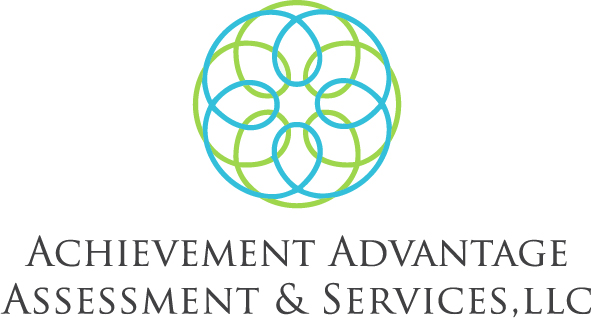In honor of School Psychology Awareness Week, we would like to highlight our chosen profession! At its core, school psychology is a helping profession. This blog is meant to bring awareness to all of the ways school psychologists are trained to help reduce educational barriers and improve outcomes for clients and their families. According to the National Association of School Psychologist website, school psychologists' graduate training develops knowledge and skills in the following areas: data collection and analysis; assessment; progress monitoring; school-wide practices to promote learning; resilience and risk factors; consultation and collaboration; academic/learning interventions; mental health interventions; behavioral interventions; instructional support; prevention and intervention services; child preparedness, response, and recovery; family-school-community collaboration; diversity in development and learning; research and program evaluation; and professional ethics, school law, and systems (NASP, 2014).
School Psychology Training
School psychologists receive graduate training in education and psychology aimed to develop skills in psychological theory, educational strategies, and assessment. Training includes both coursework and practical experience. School psychologists take classes in child development, assessment, diagnosis, educational skill development, academic interventions, social/emotional interventions, problem-solving consultation, group and individual counseling, diversity, special education laws, and ethical issues.
Currently, there two degree tracks that school psychologists complete: specialist-level or a doctorate. A school psychologist with a specialist-level degree completes at least 60 credits, which takes three years of full-time study, and typically earns either an Educational Specialist degree (Ed.S.) or a Psychology Specialist degree (Psy.S.). Some individuals who received their training in the early stages of the profession may hold a Master's degree. To earn a doctoral degree, school psychologists complete at least 90 credits and write a dissertation, which generally takes between 5 and 7 years. Both those with specialist-level and doctoral degrees end their training with a year-long 1200-hour supervised internship. In addition to competing the coursework and practical components, school psychologists must also pass the Praxis School Psychologist examination (NASP, 2014).
Although all school psychologists receive similar training, work setting often drives the skill set that they use most often. School psychologists may work in public schools, private schools, independent private practice, hospitals, preschools, school district administration offices, school-based health and mental-health centers, community-based day treatment or residential clinics, and juvenile justice programs. We will cover public schools, private schools, and private practice, where the greatest number of school psychologists work. The information below is based on school psychology experience in Ohio. It is important to note that each it may vary depending on the specific state you reside and its laws.
School Psychologists in Public Schools
The majority of school psychologists (81%) work in public school settings (NASP, 2017). These school psychologists are licensed by the State Board of Education, and their main role is to support students academically, behaviorally, and social-emotionally within the school setting.
A large part of supporting students happens through Response to Intervention (RTI) and Multi-Tier Systems of Support (MTSS) frameworks. Both RTI and MTSS, which are similar, are tiered systems that use a problem-solving approach to provide increasing levels of support for school-related needs. Fully integrated RTI or MTSS systems address both academic and social-emotional/behavioral concerns.
In the academic RTI/MTSS system, school psychologists use their knowledge of child development, academic skill development, and grade-level curriculum to ensure that effective instructional practices are driving instruction within the general education classroom. School psychologist also use data to determine which students still need additional academic interventions and supports despite receiving quality instruction in the classroom.
On the behavioral side of RTI and MTSS, school psychologists work to implement a multi-tiered approach to social, emotional, and behavioral interventions and supports though the Positive Behavior Interventions and Supports (PBIS) framework. Within this infrastructure, school psychologists and their school teams create school-wide supports to promote healthy social-emotional development and appropriate school behavior through positive strategies. Similar to academic supports, behavioral and social-emotional interventions intensify based on the student's response to the supports provided. If a student fails to respond to the school-wide behavior plan, the student might need an individualized plan. School psychologists are uniquely trained to conduct Functional Behavior Assessments (FBA). During FBAs, data is collected to determine the triggers and consequences of specific behaviors to find out why a student behaves in a certain way and how the behavior is being reinforced. Based on the results, school psychologists and team members create a Behavior Intervention Plan (BIP) to reduce the unwanted behavior by providing ways in which a student can get his/her needs met while behaving in a more positive and appropriate manner. School psychologists may also provide individual or group counseling to students through the intervention process.
School psychologists' skills allow them, along with a team, to design an intervention plan, monitor the student's progress, and evaluate if intervention is being provided with fidelity to determine whether or not a student has responded to the interventions. Based on the team's findings, after receiving intensive interventions, a student may be referred for an evaluation if the team suspects a disability.
School psychologists in the public schools can assess students for a variety of reasons, but the majority of the time they are conducting special education evaluations. School psychologists serve as the team chairperson and case manager of psychoeducational evaluations, known as an Evaluation Team Reports (ETR). These reports are referred to as an ETR because a team approach is used to determine if a student has an educational disability under one of the 13 disability categories defined in Individuals with Disabilities Education Act (IDEA). The school psychologist and other evaluators on the team provide a description of the child's educational needs and the implications that those needs have on instruction and progress monitoring. Based on those needs and implications, an Individual Educational Program (IEP) is created for the student with specific goals the student will achieve the following year and the services that they need to meet those goals.
Despite having many responsibilities in a public school setting, the child remains the school psychologist's main focus. Advocating for the best interest of the student is the foundation of all work that a school psychologist does. Family involvement is essential, so a large part of student advocacy involves collaborating with the family. School psychologists also work to link students and families to outside services to ensure that the student’s needs are being met.
School Psychologists in Private Schools
The role of school psychologists in the private school setting vary greatly. In private schools, their role is typically shaped by the type of students the school serves and what both the school and individual students need.
School Psychologists in Private Practice
School psychologists who work in private practice only need to be licensed by the State Board of Psychology. Most individuals engaged in private practice have licenses from the State Board of Education and the State Board of Psychology.
To gain a license from the State Board of Psychology, a school psychologist must have four years of experience working as a school psychologist and pass an oral exam to demonstrate understanding of laws governing school psychologists. This additional license allows those who work in private practice to provide diagnoses within their areas of expertise.
Depending on their focus, those who work in private practice primarily use their expertise in assessment to conduct comprehensive psychoeducational evaluations. Such evaluations include assessment of intellectual ability, learning patterns, achievement, motivation, behavior, or personality factors directly related to learning problems for both children and adults. These evaluations are conducted based on client self-referral. While assessments are chosen by the school psychologist, the driving force behind the assessment is the client’s presenting concern.
In a school setting, a school psychologist is conducting a psychoeducational evaluation to determine if the student has an educational disability that needs to be addressed through special education. In a private practice, a school psychologist is evaluating based on the diagnostic criteria of DSM-5 or ICD-10 to determine if the client has a disabling condition. A private school psychologist can provide a diagnosis and make recommendations regarding disability categories that the school should assess, but only a school team can determine if a student qualifies for special education services.
School psychologists in private practice also frequently complete Independent Educational Evaluations (IEEs). IEEs are evaluations conducted by a qualified examiner who is not employed by the school district. If a parent disagrees with the outcome of the evaluation that a school district has completed, the parent can request an IEE. School psychologists in private practice are uniquely positioned to complete IEEs because of their familiarity with both DSM diagnostic criteria and educational disability criteria under IDEA.
As part of an evaluation, school psychologists in private practice incorporate recommendations that can be used in educational planning. For K-12 students, this may include strategies for the child's teacher, private tutor, or family members to use at home, such as accommodations and/or direct instruction strategies. For adult clients, recommendations may include accommodations for a Section 504 Plan in the classroom setting or standardized professional assessments as well as strategies/supports for the client to implement themselves or seek out from professionals.
Within their private practice, some school psychologists may provide services that are recommended. School psychologists' training prepares them to provide counseling, academic intervention, behavior intervention, and tutoring services.
They may also provide advocacy services. Having worked both in public schools and private practice, school psychologists understand the complicated special education process. As advocates, school psychologists are available to attend meetings with clients and their educational team to help guide them through the process and act as a bridge between clients and school staff to ensure that their client's educational needs are met so they can achieve their fullest potential.
No matter what setting school psychologists are employed in, their main goal is to help individuals thrive within their educational setting.
References
For more information on school psychologists, please visit the National Association of School Psychologists website at https://nasponline.org.
National Association of School Psychologists. (2017). A Career in School Psychology: Frequently Asked Questions. Retrieved from https://www.nasponline.org/about-school-psychology/becoming-a-school-psychologist/a-career-in-school-psychology-frequently-asked-questions
National Association of School Psychologists. (2014). Who Are School Psychologists. Retrieved from https://www.nasponline.org/about-school-psychology/who-are-school-psychologists




